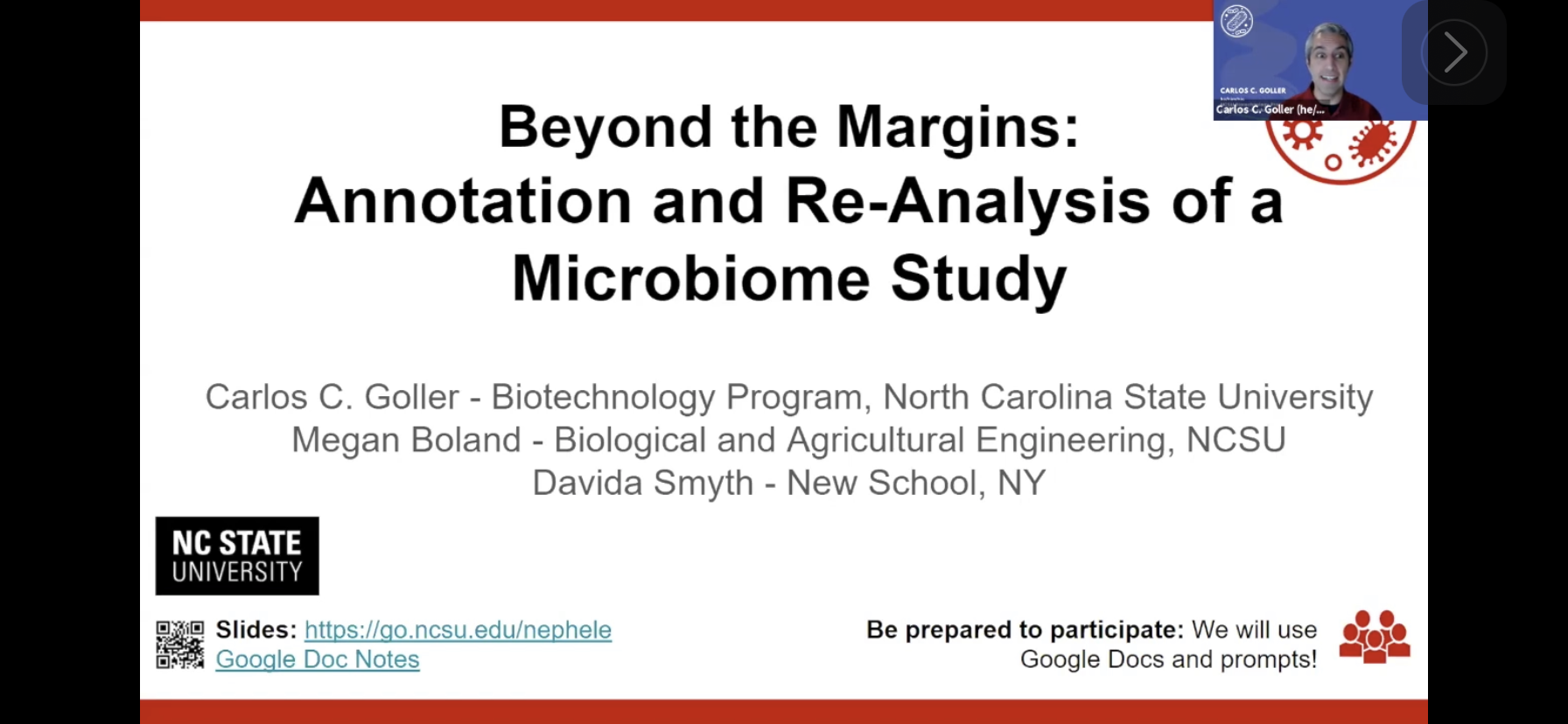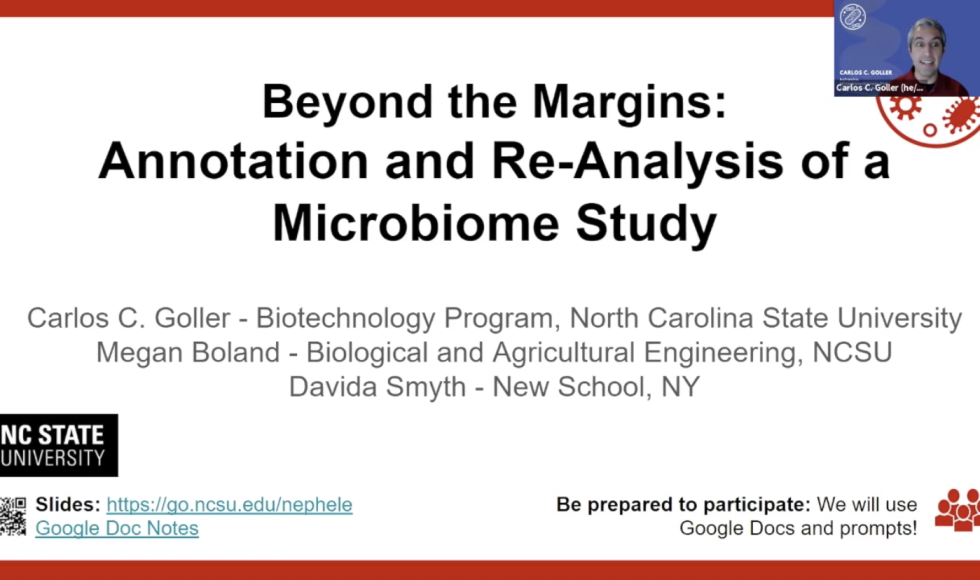I finally did it. I watched our recorded presentation for the 2020 Lily Conference today. I recorded it in November in a single Zoom session with Deb and didn’t look back. I’ve been watching one or two recorded sessions each night and admiring the beautiful slides and thoughtful interactions presenters incorporated. I wondered: how long was our talk on a metagenomics activity? Did I ramble? Did people pause to reflect as prompted? After every talk I watch I usually think about ways to incorporate their presentation styles, engagement elements, or activities. However, I am committed to improving and wanted to watch my recording to think about how update it for future conferences/sessions.
The presentation was on a microbiome data analysis activity we created for the fall BIT 477/577 Metagenomics course. For several years now, I have been fortunate to have been able to work with the NIH Bioinformatics Nephele Microbiome Analysis team. Severa years ago we used one of the early versions of this web-based tool in the course. With student feedback and an incredibly supportive Nephele team, we are now able to routinely use Nephele to teach students about data quality and commonly used microbiome analyses pipelines such as QIIME and DADA2. Users upload sequence data and a mapping file connecting reads to metadata and enter some parameters in order to submit the job to the cloud. Results are then sent via email with a link to download files including output graphs and statistics, depending on the pipeline. It is extremely user-friendly and powerful. Then, last year I became a PALM active learning fellow and have the pleasure of learning from my teaching mentor Dr. Davida Smyth from The New School in New York. Smyth and I love metagenomics. Then, our graduate teaching assistant Megan Boland and I decided to create an activity based on the reanalysis of a published dataset. With Nephele’s help, we identified a dataset from a study on HIV infection and microbiome. I added reflection questions that focused on the Data Equity Framework. Megan helped subset the data and write questions, and Davida had instilled in me the importance of reflection and real-work connections. We formed a great team and crafted a fun activity we used in the course and implemented online, the Lilly Conference talk I gave described the collaboration and goal of using prompts to engage students in difficult and uncomfortable conversations about data equity in these studies and their design. Students annotated the article, answered questions individually, analyzed data, and posted comments in an anonymous TopHat discussion. It was a fun activity with some technical hiccups. Nevertheless, the aim of the conference presentation was to start dialogues with others about prompts to introduce metagenomics, ethics, and data equity into a variety of courses. I shared the slides and some resources at: go.ncsu.edu/nephele I hope these are useful to others!
Watching my own presentation was not as painful as I thought. I remembered the names of the team members, the activity, and key points and learning objectives for attendees. I spoke clearly and paused for emphasis or to allow the audience to read text on the slides or reflect. I’m trying to get into the habit of doing this. However, I sometimes read text from the slide instead of expressing key ideas in different words and often spoke too slowly. I had to laugh because yesterday I was working on fixing some captions from a Panopto recording for the yeast course, and now realize why I confuse the auto transcription system with pauses in the middle of words. My goal is to improve delivery for clarity, and I have been trying to record audio tracks for assignment guidelines and the Moodle LMS yeast course page. Interestingly, the presentation was just 20 min long, which was my intended target!



